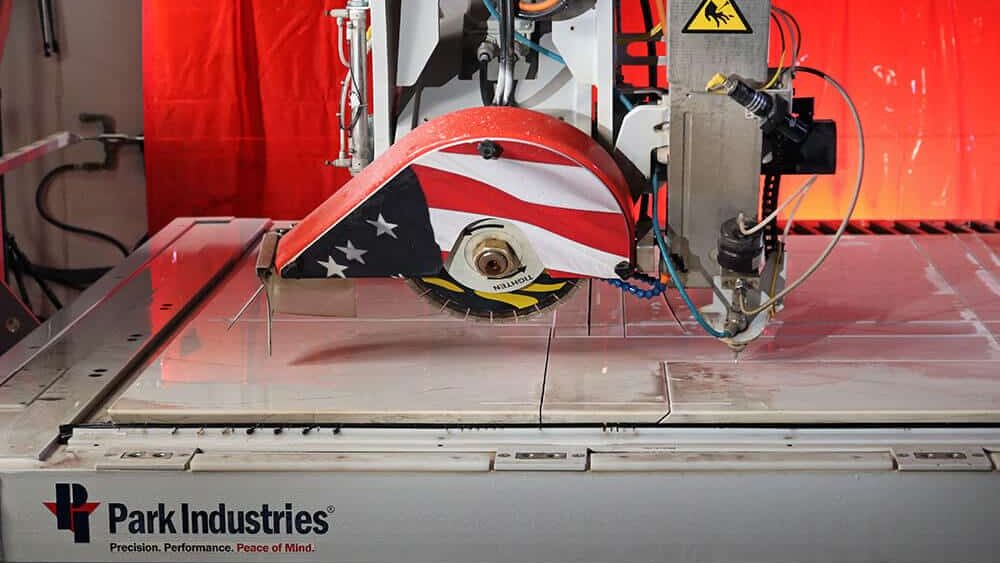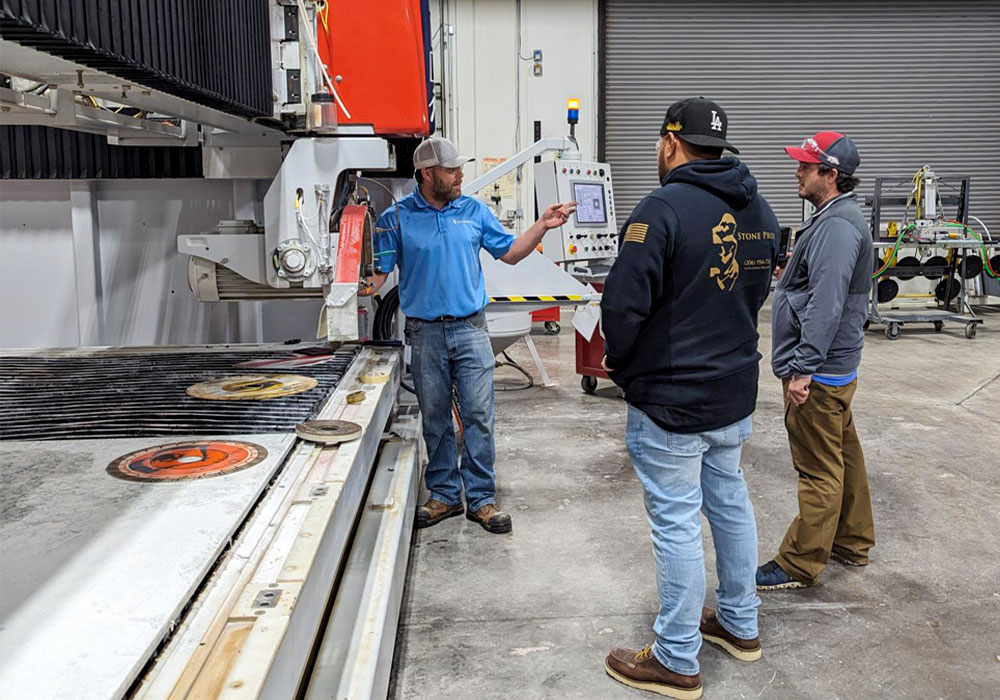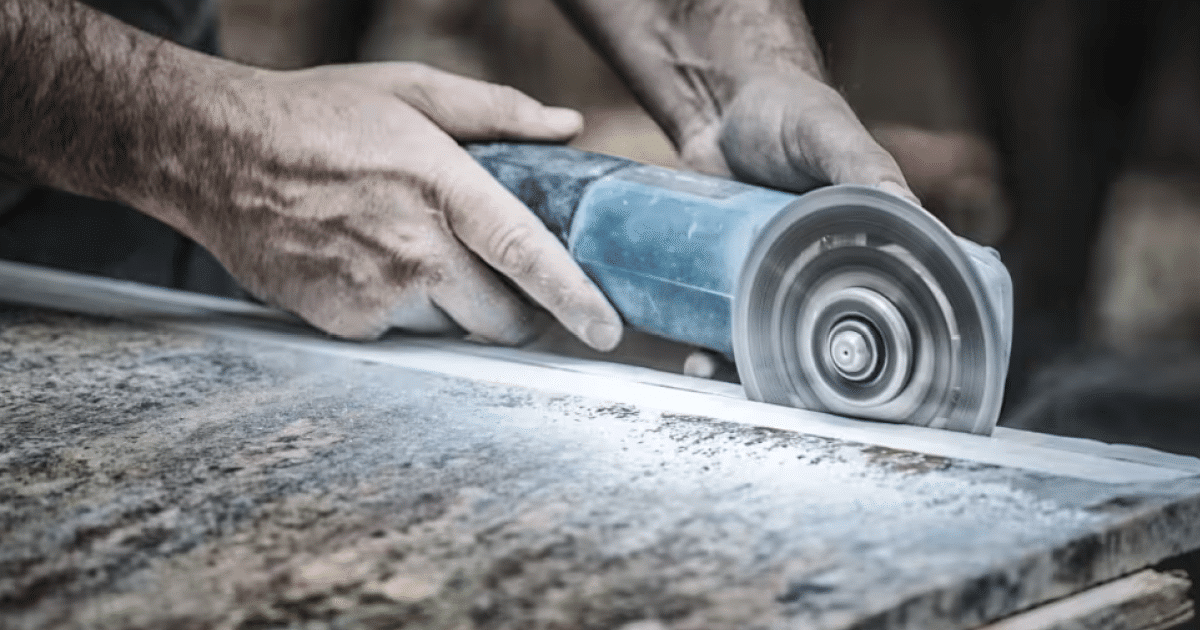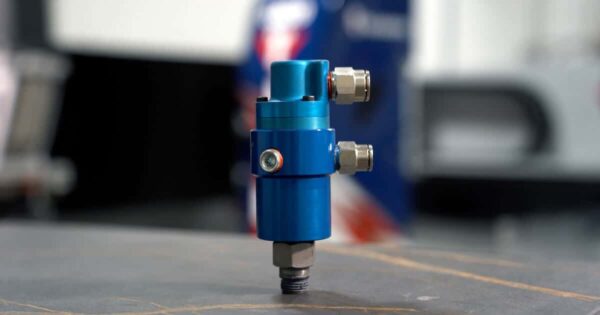As a stone fabrication business owner, you’re likely aware of the importance of silica dust reduction and exposure limit compliance. Protecting your employees and ensuring a safe workplace are top priorities, especially with recent Cal/OSHA regulations.
While it is impossible to eliminate silica dust from your shop, you can significantly reduce it and improve safety with the right equipment.
What is Silica and why is it dangerous?
Crystalline silica is a common natural mineral found in various materials. Respirable crystalline silica is created during processes like the dry cutting or dry grinding of stone. Workers who inhale these small crystalline silica particles are at increased risk of developing serious silica-related diseases—including Silicosis, an incurable lung disease that can lead to disability and death.
Despite often lacking immediate symptoms, these conditions can develop from repeated or prolonged exposure. Strict workplace safety measures are crucial to minimize dust inhalation and protect worker health in silica-exposed industries.
What is happening in the stone industry around silica?
The North American stone industry, particularly California-based fabricators, has faced increased regulation from Cal/OSHA regarding silica exposure. A new Emergency Temporary Standards on Respirable Crystalline Silica for General Industry took effect in late December 2023.
Additionally, the new emergency temporary standard effectively prohibits the dry cutting of engineered stone with 0.1% or more silica or natural stone with 10% or more. High-risk tasks like drilling and polishing require wet-cutting saws or tools that spread water on the material to suppress dust.

Utilizing “Wet” Cutting & Polishing
Wet processing is proven to be the most effective way to reduce silica dust. Wet processing involves constantly dousing blades and tools with water, which significantly reduces silica dust from entering the air and minimizes the risk of inhalation.
Park’s cutting-edge equipment is your ultimate ally for fabricating safely. It utilizes wet processing and automates much of the fabrication process, decreasing workers’ direct contact with the stone. In your operation, safety must go hand in hand with efficiency. By choosing Park equipment, you’re investing in both the safety and productivity of your business.
Types of Wet Processing Machines
To achieve effective silica reduction in your shop, you need machines that specialize in wet processing in three key areas: cutting, polishing, and water management.
Bridge Saws, CNC Saws & Sawjets (Cutting)
These machines are used for precision cutting of stone slabs. When it comes to minimizing respirable silica, machines should utilize water during the cutting process, which helps to suppress silica dust by wetting the stone surface and reducing airborne particles. Additionally, CNC machines can be programmed, minimizing the need for manual intervention, and further reducing worker exposure to silica dust.
CNC Routers & Edge Polishers (Polishing)
CNC routers are automated machines used for intricate shaping, profiling, and polishing of stone edges. Edge polishers, as the name suggests, specialize in polishing the edges of stone slabs. Both machines play a crucial role in minimizing respirable silica by utilizing water coolant systems to reduce dust generation during the polishing process.
By continuously wetting the stone surface and abrasive tools, CNC routers and edge polishers effectively suppress silica dust, mitigating the risk of airborne exposure for workers.
Water Recycling Systems (Water Management)
Water recycling systems are integral to stone fabrication facilities for managing and supplying water usage during machining processes. These systems collect, filter, and recycle water used in various fabrication machines, such as saws and polishers.
By efficiently recycling water, these systems contribute to minimizing water consumption and reducing the generation of silica-containing slurry, which can contribute to silica exposure if not properly managed.
More Ways to Reduce Silica
Silica Training
Adherence to Air Quality Requirements
Personal Protective Equipment (PPE)
OSHA-compliant medical surveillance

At Park Industries®, we understand the importance of respirable crystalline silica reduction in the fabrication process and in the face of Cal/OSHA’s Emergency Temporary Standard on Respirable Crystalline Silica, a safe work environment is non-negotiable. The only treatment for silicosis is prevention: avoiding exposure to respirable silica dust.
Choosing Park equipment is investing in both the safety and productivity of your business. Our cutting-edge machines facilitate production that is not only safe but also highly efficient.
 Adding the right machinery provides real results. Understand the impact at these shops.
Adding the right machinery provides real results. Understand the impact at these shops.




